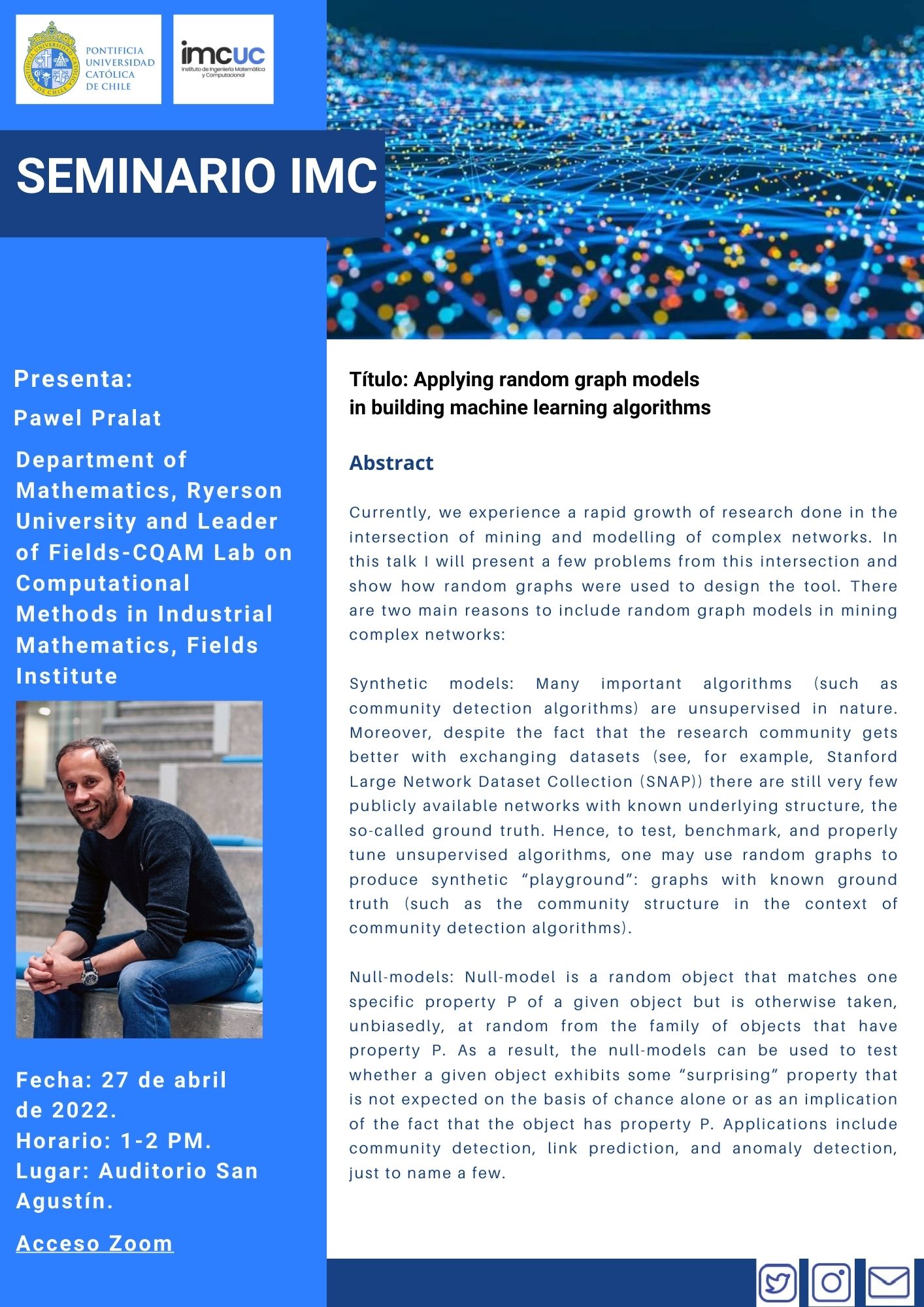El Instituto de Ingeniería Matemática y Computacional (IMC) los saluda atentamente y los invita al seminario que se dictará la próxima semana.
La charla se efectuará el miércoles 27 de abril a las 13 horas, presencialmente en el auditorio del edificio San Agustín del Campus San Joaquín. Los que no puedan asistir en persona, también podrán tener acceso vía Zoom a través de un enlace que se puede obtener escribiendo al correo Esta dirección de correo electrónico está siendo protegida contra los robots de spam. Necesita tener JavaScript habilitado para poder verlo..
La información sobre la charla la pueden encontrar en el poster adjunto y abajo.
Título: Applying random graph models in building machine learning algorithms
Expositor: Pawel Pralat
Afiliación: Department of Mathematics, Ryerson University and Leader of Fields-CQAM Lab on Computational Methods in Industrial Mathematics, Fields Institute
Fecha: 27 de abril de 2022, 1:00 PM-2:00 PM
Lugar: Auditorio San Agustín; Zoom
Abstract:
Currently, we experience a rapid growth of research done in the intersection of mining and modelling of complex networks. In this talk I will present a few problems from this intersection and show how random graphs were used to design the tool. There are two main reasons to include random graph models in mining complex networks:
Synthetic models: Many important algorithms (such as community detection algorithms) are unsupervised in nature. Moreover, despite the fact that the research community gets better with exchanging datasets (see, for example, Stanford Large Network Dataset Collection (SNAP)) there are still very few publicly available networks with known underlying structure, the so-called ground truth. Hence, to test, benchmark, and properly tune unsupervised algorithms, one may use random graphs to produce synthetic “playground”: graphs with known ground truth (such as the community structure in the context of community detection algorithms).
Null-models: Null-model is a random object that matches one specific property P of a given object but is otherwise taken, unbiasedly, at random from the family of objects that have property P. As a result, the null-models can be used to test whether a given object exhibits some “surprising” property that is not expected on the basis of chance alone or as an implication of the fact that the object has property P. Applications include community detection, link prediction, and anomaly detection, just to name a few.
Bio:
Dr. Pawel Pralat (http://www.math.ryerson.ca/~pralat/) is a full professor of mathematics at Ryerson University and the Director of Fields-CQAM Lab on Computational Methods in Industrial Mathematics at The Fields Institute for Research in Mathematical Sciences. His main research interests are in modelling and mining complex networks. Since 2006, he has written 180+ papers and 3 books with 130+ collaborators. He is trained both in (theoretical and applied) computer science as well as mathematics (M.Eng. and M.A.Sc. in CS, Ph.D. in Mathematics and CS), has strong programming and applied research skills, gained through experience in collaboration with the private sector (such as Microsoft Research, Google Research, NXM, Motorola, The Globe and Mail, BlackBerry, Alcatel-Lucent, Environics Analytics) as well as the Government of Canada (Tutte Institute for Mathematics and Computing, part of Communications Security Establishment).

